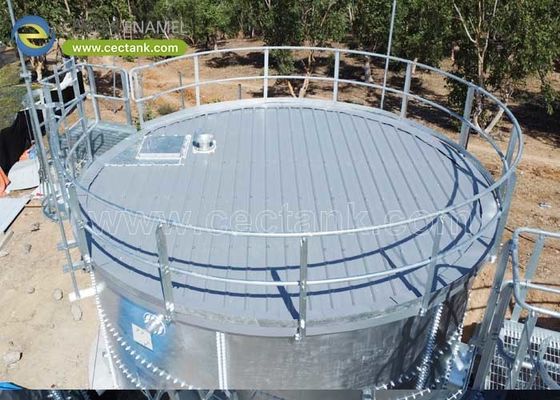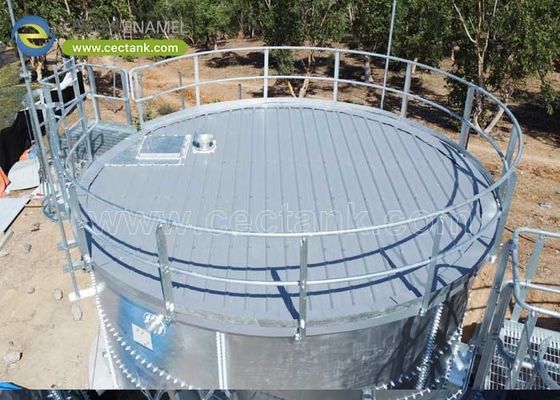-
Glass Fused To Steel Tanks (419)
-
Stainless Steel Tanks (421)
-
Fusion Bonded Epoxy Tanks (424)
-
Galvanized Steel Tanks (321)
-
Aluminum Dome Roofs (947)
-
Wastewater Storage Tanks (226)
-
Welded Steel Tanks (297)
-
Pressure Vessels (295)
-
Anaerobic Digester (201)
-
Industrial Water Tanks (349)
-
Glass Lined Steel Tanks (180)
-
Bolted Steel Tanks (181)
-
Sludge Storage Tank (115)
-
Biogas Storage Tank (173)
-
Leachate Storage Tanks (133)
-
Agricultural Water Storage Tanks (179)
-
Fire Water Tank (166)
-
Grain Storage Silos (130)
-
Biogas Projects (349)
-
Wastewater Treatment Projects (270)
-
Double Membrane Roof (223)
Eparator Oil-water Separator Gas-liquid Separator Liquid-liquid Separator Liquid-gas Separator Liquid-solid Separator Gas-solid Separator Solid-solid Separator Solid-gas Separator Solid-liquid Separator Solid-liquid-gas Separator
| Place of Origin: | China |
| Brand Name: | CEC TANKS |
| Certification: | ISO 9001:2008, AWWA D103 , OSHA , BSCI |
| Model Number: | W20161227002 |
| Minimum Order Quantity: | 1set |
| Price: | $5000~$20000 one set |
| Packaging Details: | PE poly-foam between each two steel plates ; wooden pallet and wooden box |
| Delivery Time: | 0-60 days after deposit received |
| Payment Terms: | L/C, T/T |
| Supply Ability: | 60 sets per month |
|
Detail Information |
|||
| Place of Origin | China | Brand Name | CEC TANKS |
|---|---|---|---|
| Certification | ISO 9001:2008, AWWA D103 , OSHA , BSCI | Model Number | W20161227002 |
| Holiday Test: | >1500v | Tank Body Color: | Dark Green / Can Be Customized |
| Foundation: | Concrete | Steel Plates Thickness: | 3mm To 12mm , Depends On The Tank Structure |
| Roof Available: | Glass Fused Steel Roof , Membrane Roof, Aluminum Roof , GRP Roof | Highlight: | Solid-liquid Separator,Gas-liquid Separator,Eparator Oil-water Separator |
Product Description
| Attribute | Value |
|---|---|
| Holiday test | >1500v |
| Tank body color | Dark green / can be customized |
| Foundation | Concrete |
| Steel plates thickness | 3mm to 12mm, depends on the tank structure |
| Roof available | Glass fused steel roof, membrane roof, aluminum roof, GRP roof |
In an era of increasing environmental consciousness and fluctuating water availability, rainwater collection has emerged as a vital strategy for sustainable water management. From residential gardens to large-scale agricultural and industrial operations, harnessing the power of precipitation offers numerous benefits, including reduced utility bills, decreased reliance on municipal water sources, and a smaller environmental footprint.
| Products | Types |
|---|---|
| Atmospheric Pressure Vessels | Horizontal Containers, Vertical Cylindrical Containers, Vertical Cylindrical Storage Tanks |
| Separator Pressure Vessels | Gravity Separator, Cyclone Separator, Coalescing Separator, Centrifugal Separator, Steam-water Separator, Bearing Separator, Mechanical Filter, Ion exchange Filter, Air Filter, Fuel Filter, Adsorption Filter, BioFilter, Oil Filter, Hydraulic oil Filter, Separator |
| Heat Exchangers | Shell and Tube Heat Exchangers, Plate Heat Exchangers, Spiral Heat Exchangers, Air Coolers, Liquid Coolers, Thermoelectric Coolers, Chill Water Main Unit, Evaporative Condensers, Air cooled Condensers, Electronic Gas Condensers |
| Reactor Pressure Vessels | Stirred Tank Reactors, Continuous Stirred-tank Reactors, Tubular Reactors, Tower Reactors, Fixed Bed Reactors, Fluidized Bed Reactors, Bioreactors |
Galvanized steel tanks stand out for their exceptional properties, making them a preferred choice for rainwater collection projects. The key to their strength lies in the galvanization process, where steel is coated with a layer of zinc. This zinc coating acts as a sacrificial barrier, protecting the underlying steel from corrosion, rust, and environmental degradation.
- Exceptional Durability: Withstands harsh weather conditions and maintains structural integrity for decades
- Corrosion Resistance: Zinc coating provides superior protection against rust and corrosion
- Structural Integrity: Robust construction suitable for various capacities
- Cost-Effectiveness: Lower lifetime cost due to extended lifespan and minimal maintenance
- Sustainability: Fully recyclable at end of service life
- Hygiene: Smooth, non-porous surface resists bacteria and algae growth
Selecting the right galvanized steel tank requires careful consideration of several factors to ensure your system meets specific needs, budget, and longevity expectations.
- Capacity Requirements: Assess rainfall, catchment area, intended use, and storage duration
- Tank Dimensions: Consider available space and foundation requirements
- Design & Construction: Bolted panel construction offers transport ease and scalability
- Galvanization Quality: Hot-dip galvanization with proper coating thickness
- Fittings & Accessories: Include proper inlets, outlets, overflow mechanisms, and filters




